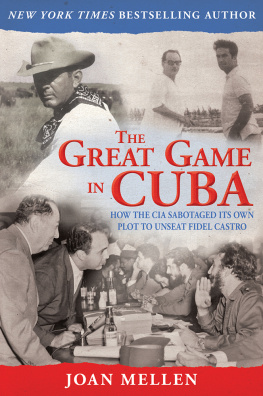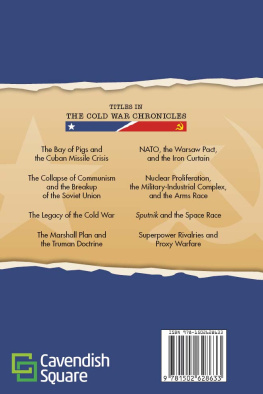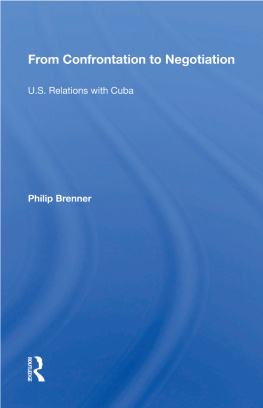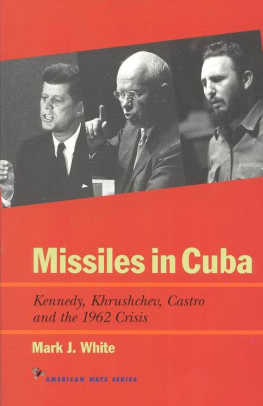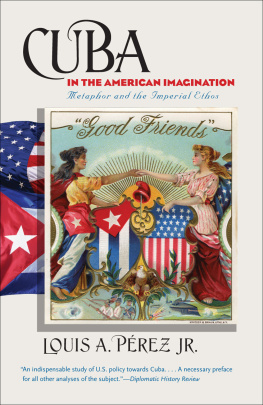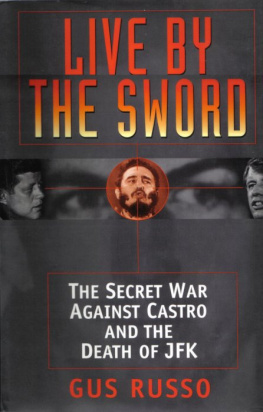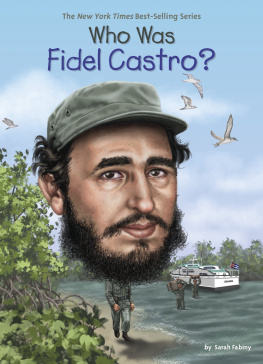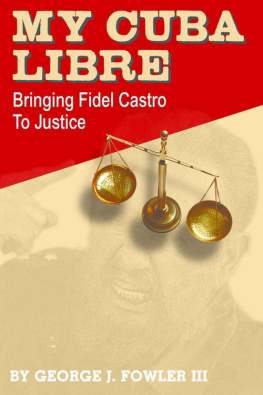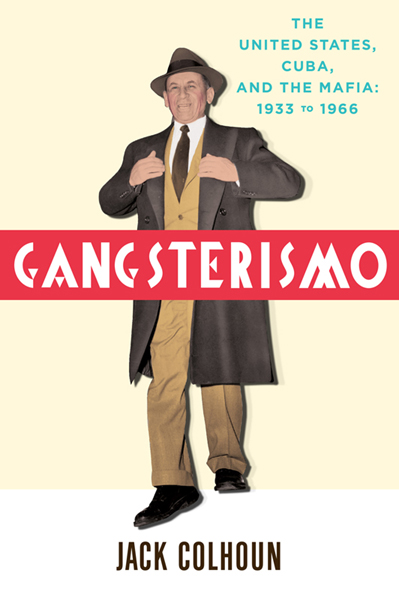
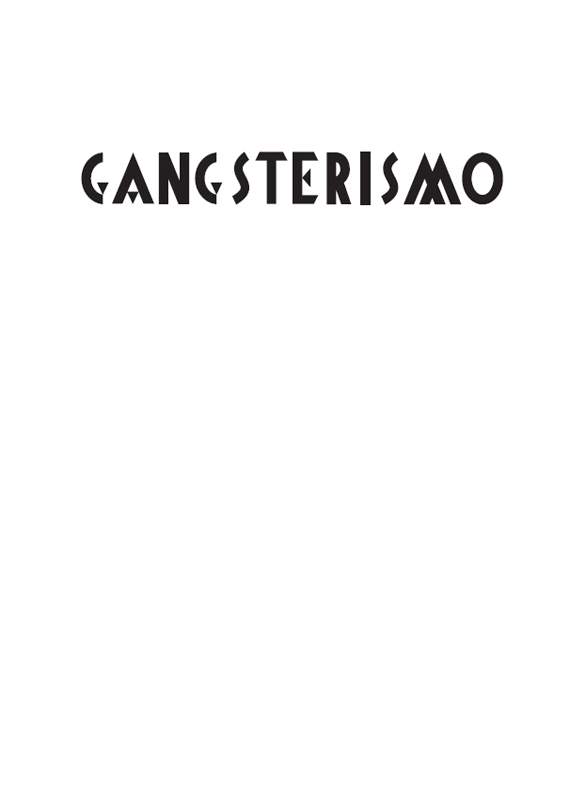
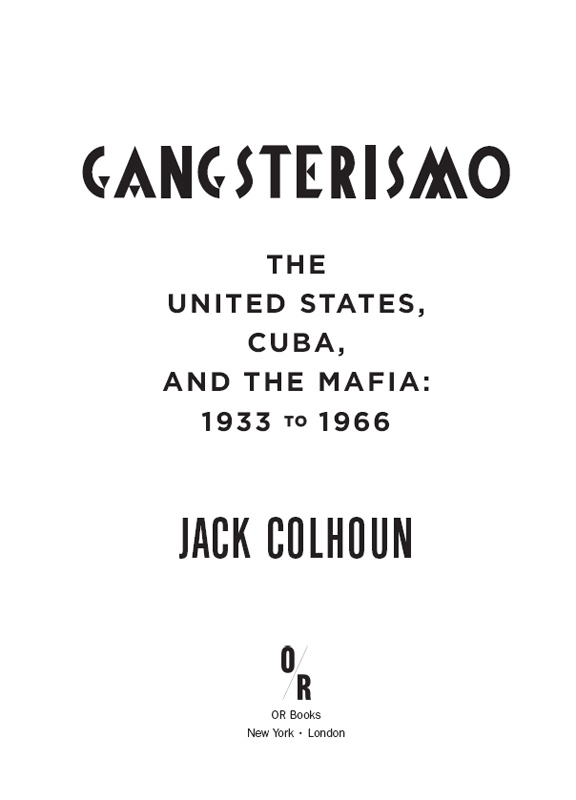
To DeDe
2013 Jack Colhoun
Published by OR Books, New York and London
Visit our website at www.orbooks.com
All rights reserved. No part of this book may be reproduced or transmitted in any form or by any means, electronic or mechanical, including photocopy, recording, or any information storage retrieval system, without permission in writing from the publisher, except brief passages for review purposes.
First printing 2013.
Cataloging-in-Publication data is available from the Library of Congress.
A catalog record for this book is available from the British Library.
ISBN 978-1-935928-89-8 paperback
ISBN 978-1-935928-90-4 ebook
Typeset by Lapiz Digital Services, Chennai, India.
Printed by BookMobile in the United States and CPI Books Ltd in the United Kingdom. The U.S. printed edition of this book comes on Forest Stewardship Council-certified, 30% recycled paper. The printer, BookMobile, is 100% wind-powered.
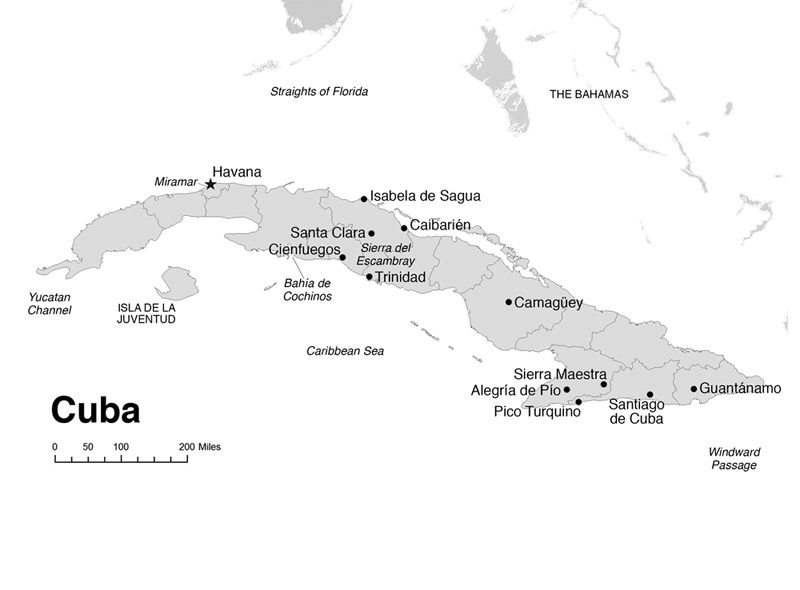
PREFACE
August 1960, Miami: a telltale bargain was struck between exiled Cuban politician Manuel Antonio Varona and organized crime leader Meyer Lansky. Lansky, the impresario of the Mafia gambling colony in Cuba since the 1930s, had owned Havanas Hotel Riviera and the Montmartre nightclub and their fabulous casinos.
In Cuba, Lansky was known as the Little Man for his five-foot-four-inch stature, but his cold, hard eyes and intense demeanor were physical expressions of a man used to wielding power and getting his way. His dream of turning Havana into a tropical paradise for North American tourists had come true. Havana had a reputation for the best gambling and wildest nightlife in the Western Hemisphere in the 1950s. And since Lansky shared the Mafias profits with General Fulgencio Batista and senior Cuban army and police officers, that gambling paradise became the cornerstone of a full-fledged Cuban gangster state.
But when Fidel Castros bearded revolutionaries drove Batista from power on New Years Day 1959, Castro condemned the Mafias gambling colony for corrupting Cuban values, and shut it down. The Cuban revolution brought down the curtain on the era of gangsterismo in Cuba.
In the meeting in Miami, Lansky offered Varona several million dollars to form a Cuban government-in-exile to replace Castros revolutionary regime. Lansky also promised to arrange a public relations campaign in the United States to polish Varonas political image. In return, Varona, a stout man with heavy dark-framed eyeglasses, endorsed the Mafias single-minded objective: to reopen its casinos, hotels, and nightclubs in a post-Castro Cuba.
Several months before the Miami meeting, Varona, a leading member of the reformist Partido Revolucionario Cubano-Autntico (Cuban Revolutionary Party-Authentic), had publicly broken with Castro. Ever since, he had been shuttling between cities in the Americas to confer with other anti-Castro Cubans in a bid for leadership of the Cuban counterrevolution.
Varona had been both prime minister and Senate president under Autntico President Carlos Pro Socarrs. For their part, Pro and his brother Paco were closely connected to Lansky and Charles Lucky Luciano. In March 1952, Batista seized power in a coup detat (strike against the state), and Pro fled, leaving Varona to assume leadership of the Autntico Party.
But the Autnticos reputation as a reform party had been badly tarnished by the ties of its leaders to the Mafia gamblers. Varona himself had been connected with smuggling and kidnapping, and he kept pistoleros (political gunmen) on his payroll. A CIA memorandum reported, [H]e maintained action groups at his service to force political decisions both in his [Camaguey] province and in Las Villas province where he was once provincial leader of the Autntico Party. Varona had good reason to accept Lanskys offer. And so, in a remarkable act of political surrealism, the American Mafia, notorious for gangland murders and corruption of politicians, cleaned up the image of its Cuban partners in crime.
They hired the public relations firm of Edward K. Moss in Washington, D.C. Moss was a good choice for the job. Documents in his CIA file reveal that he had longstanding connections to organized crime in the United States. One report stated, Mosss operation seems to be government contracts for the underworld and probably surfaces Mafia money in legitimate activities. Other CIA records reported that Moss worked for the Defense Production Administration of the Department of Commerce in the early 1950s.
Julia Cellini, who ran Mosss secretarial services, came from a family of Mafia gamblers. Her brothers Edward and Goffredo were managers of the gaming rooms of the Casino Internacional and the Tropicana nightclub in the 1950s. Another brother, Dino, a close associate of Lansky, Santo Trafficante, Jr., and Charles The Blade Tourine, was a manager of the casino at the Sans Souci nightclub. His connection to Moss could be traced back to 1957. The Cellini brothers passed Mafia moneyestimated at between $2 and $4 millionfor Varona through the Edward K. Moss Agency, and Moss also solicited contributions from U.S. businesses for Varona. Moss was connected to other anti-Castro Cuban exiles in addition to Varona. He had met with Manuel Artime, leader of the Movimiento de Recuperacin Revolucionario (MRR: Movement of Revolutionary Recovery), and discussed raising funds for him.
Moss also had ties to the CIA. When FBI Director J. Edgar Hoover reported that [E]fforts are being made by United States racketeers to finance anti-Castro activities in the hope of securing gambling, prostitution and dope monopolies in the event Castro is overthrown, in a December 31, 1960, memorandum to Director of Central Intelligence (DCI) Allen W. Dulles, the CIA already knew that Varona had met with the Mafia gamblers. That was because Moss had told the CIAs Domestic Contact Division about his work for Varona. An August 25, 1960, CIA cable from JMASH in Mexico reported that Varona had solicited funds [from] Las Vegas gamblers on a recent visit to the United States.
According to a CIA memorandum, Moss commented that he had been in touch with President-elect Kennedys staff so that they will be informed of his activities. His purpose in doing this is that he does not know as yet what the policy of the new administration will be for publicizing foreign activities on U.S. soil. CIA Inspector General J. S. Earman acknowledged that the Agency had an interest in Moss, but said the CIA did not use him in Cuba operations.
But matters got even more complicated. While Varona was negotiating the terms of his partnership with the Mafia gamblers, he was also working out an arrangement with the CIA. Varonas CIA security file indicates that he was of covert interest to the Agency in 1957. An October 1957 CIA memorandum stated, Subject [Varona] is reported to be very close to one Carlos Pro Socarrs, ex-president of Cuba. Varona frequently visited Pro at his residence in Miami at the Vendome Hotel.
Varona was given operational approval for amended use as an informant by the CIAs Western Hemisphere Division on August 28, 1959. CIA headquarters recommended that suitable controls be used to keep Varona from becoming an embarrassment to this Agency. According to information in Varonas CIA files, the Agency invited Varona to the United States to set up an anti-Castro movement in March 1960.
Next page


